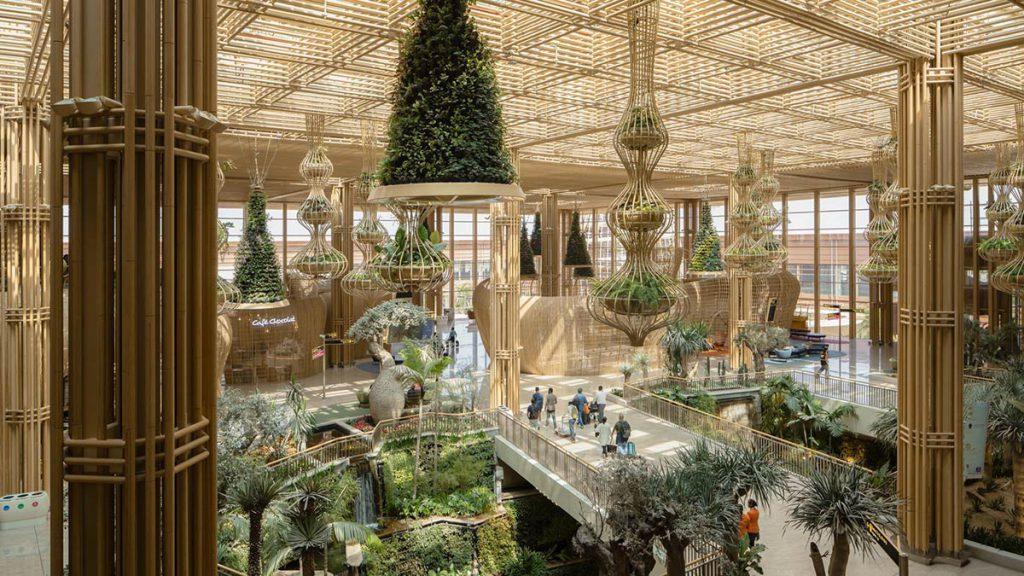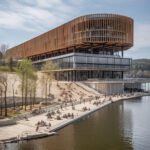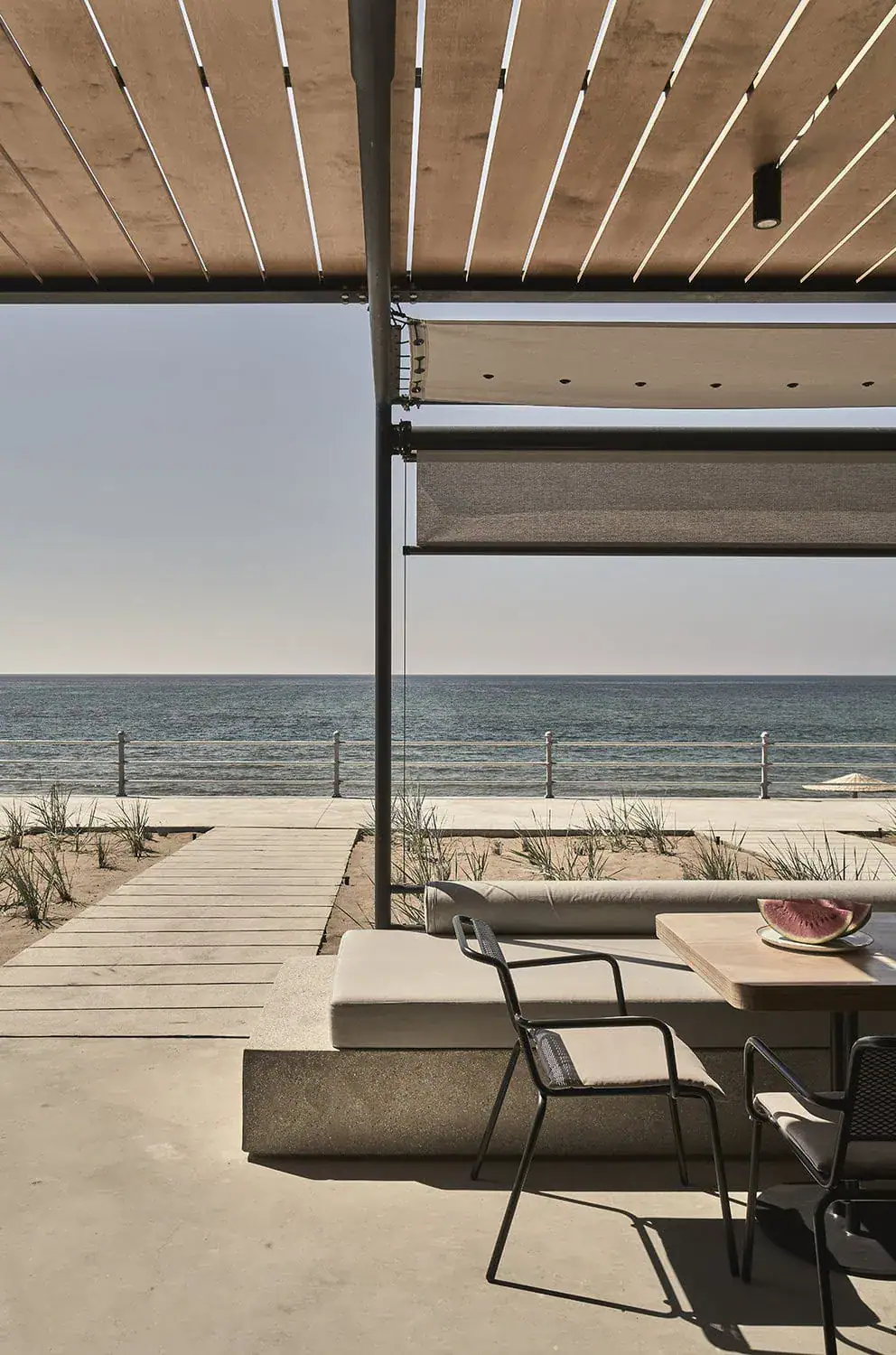With its new Terminal 2 at Kempegowda International Airport in Bangalore, India shows the world how airports can be designed sustainably and in harmony with nature – using material efficiency, renewable resources, and 600,000 plants.
We usually know airports as loud, restless, sterile places. From check-in to gate, materials are almost always a trio of steel, concrete, and glass. While other building typologies have long broken away from this combination, airports often remain stuck in it. Recent examples, like Portland Airport in the US, impressively show how airport infrastructure can become natural and relaxing environments – in this case through timber construction and biophilic design.
Now, another example of this shift can be seen at Bangalore’s airport in India.
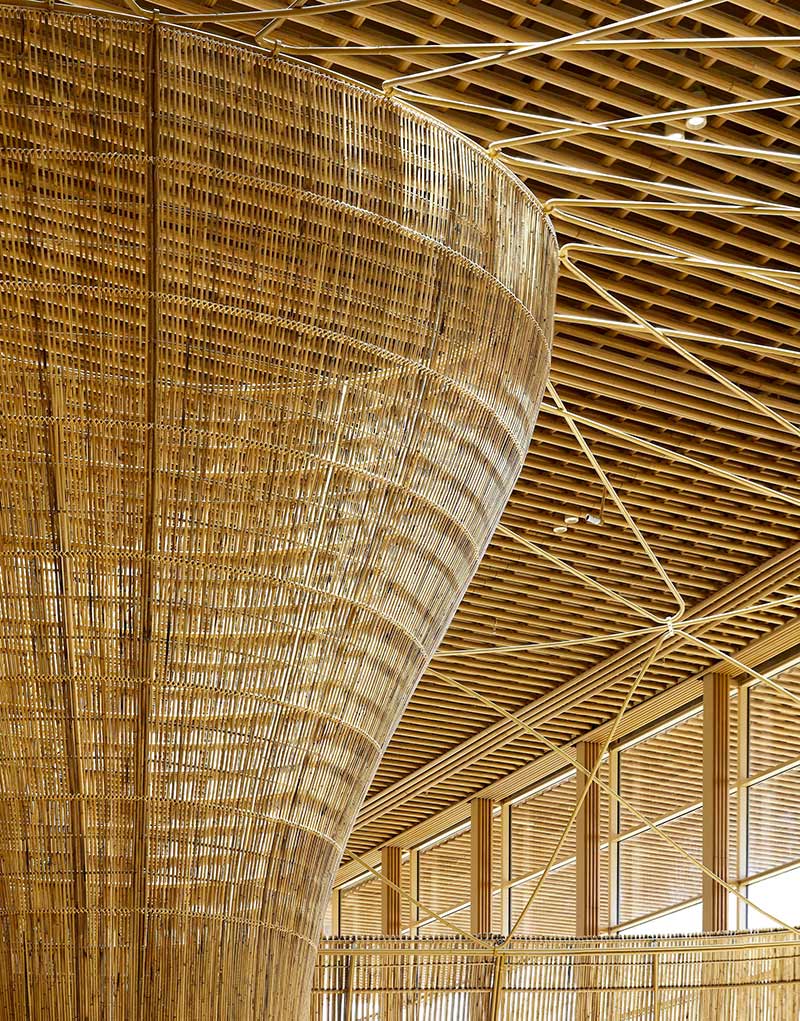
The newly opened Terminal 2 at Kempegowda International Airport, designed by Skidmore, Owings & Merrill and Enter Projects Asia, has rightly been named the “Terminal in a Garden.”
11 gates, 600,000 plants
“We’ve spent decades thinking about airports in entirely the wrong way. India just showed the world how to do it right – with plants, not more concrete,” says Moein Nodehi, an expert in nature-based design. He calls Bangalore’s new terminal an international showcase of environmentally friendly, people-centred architecture.
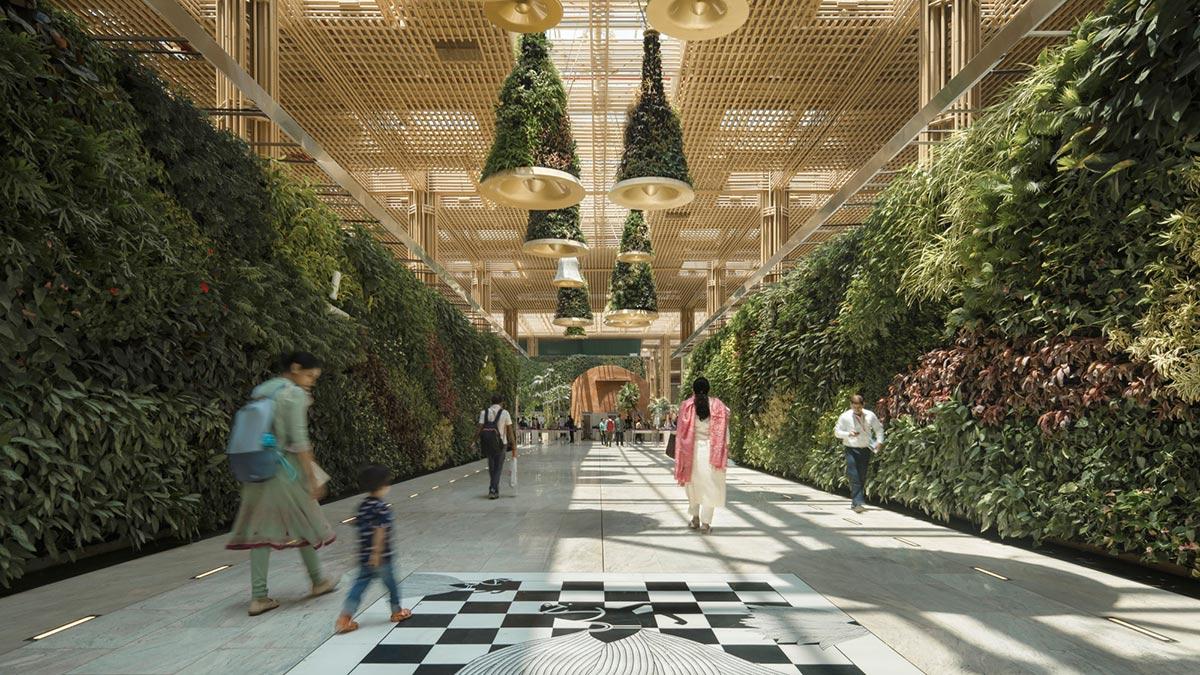
Some 600,000 plants grow along the green walls, hang from spatial installations, and form lush tropical gardens outdoors. They reference Bangalore itself, known both as India’s high-tech hub and as the Garden City. “The plants don’t just look beautiful; they help filter the air, cool the building, and even make people calmer and happier,” says Nodehi, whose architectural studio Biotonomy specialises in creating self-sufficient buildings.
Throughout the complex, plantings, outdoor gardens, and natural materials connect nature with the traveller’s experience.
Skidmore, Owings & Merrill, Enter Projects Asia
Outside, pathways weave through what is called the forest belt, connecting different building sections with bridges. This creates oases and quiet zones away from the usual bustle of a busy international airport.

Bamboo weavings create organic forms and connect travellers to nature.
Inside, passengers encounter sculptural bamboo weavings – hanging plant baskets from the ceilings and pavilion-like structures that create light zoning in the large halls. These organic designs draw on traditional Indian weaving techniques and were crafted locally.
This handmade quality surprises in such a setting, lending warmth and a homely feel. Natural light pours in through ceiling openings and is filtered through bamboo lattices.
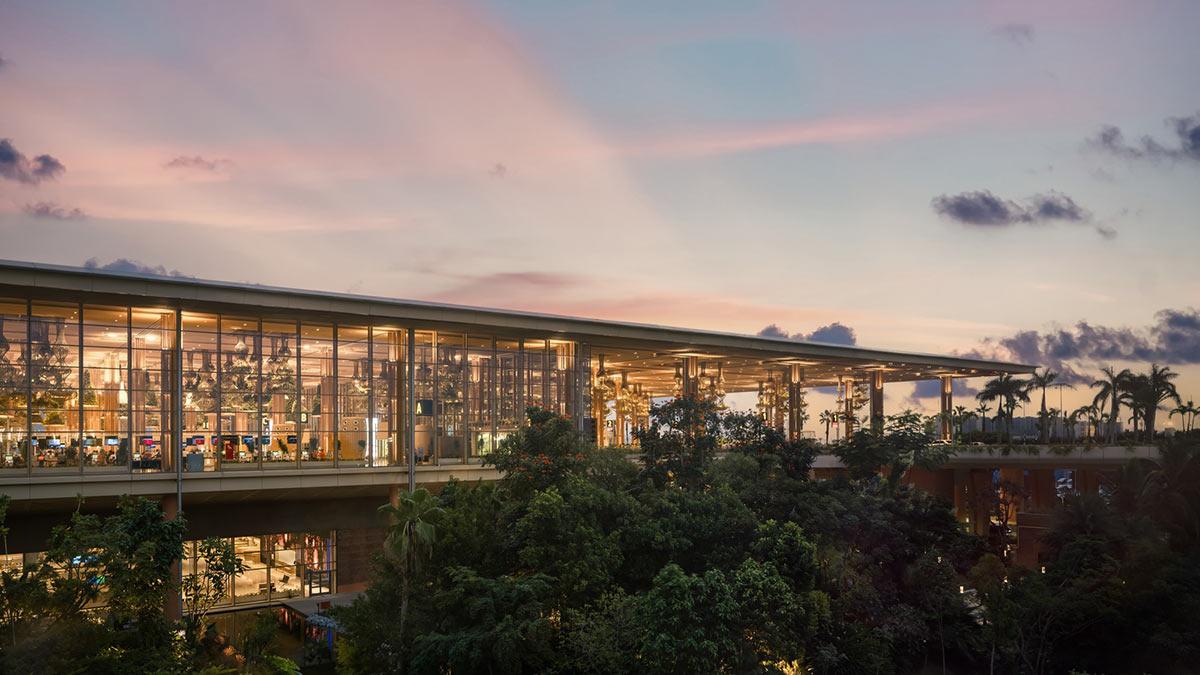
Efficiency and modularity
Unlike the sweeping roof forms often seen at airports, Terminal 2 is built on an orthogonal structure with a hybrid construction system and large roof overhangs that provide shade.
The result is one of the lightest terminal roofs of its size in the world, built entirely from locally produced materials using local construction technology.
Skidmore, Owings & Merrill, Enter Projects Asia
Each supporting column consists of four steel elements clad in bamboo. The uniform modular grid ensures economic efficiency and provides maximum flexibility to adapt to the rapidly changing aviation industry.
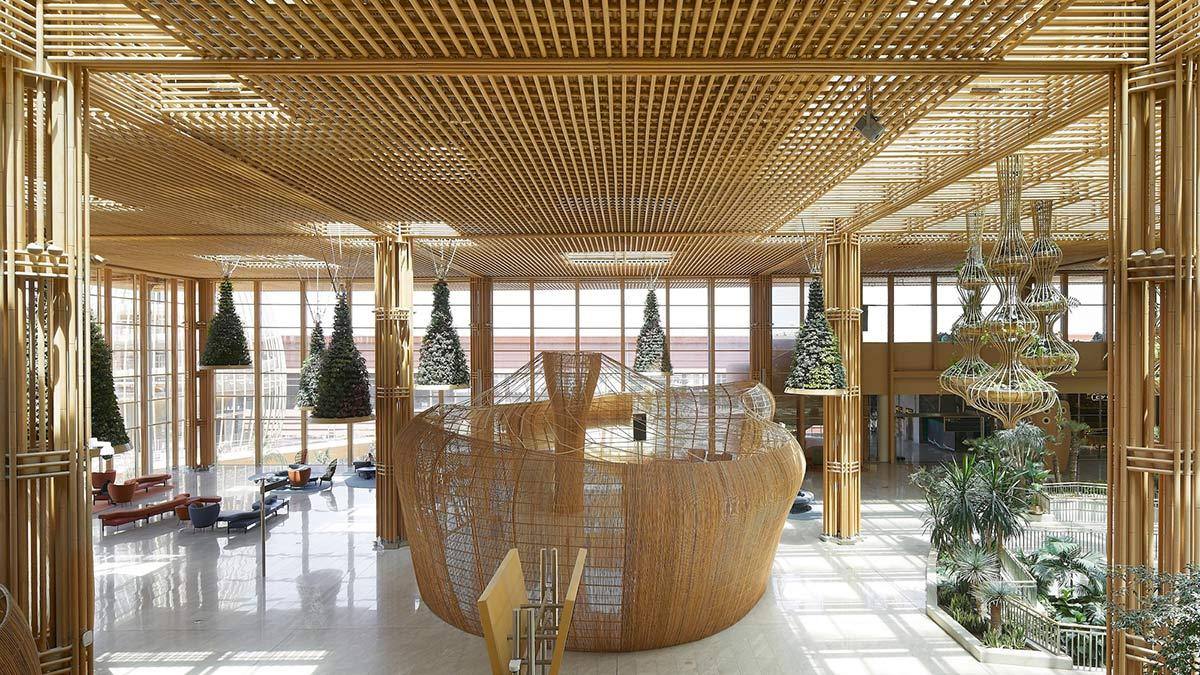
One main goal was to design a structure that is as efficient and resource-saving as possible. The roof over the check-in and retail areas is made of long-span steel frames supported by columns spaced 18 metres apart.
Award-winning sustainable construction
Beyond material efficiency, the project prioritised renewable materials and sustainable operation. The entire terminal runs on renewable energy. Despite the vast number of plants inside and outside, no more water is needed than what falls as rain on the airport site – with excess water treated and reused.
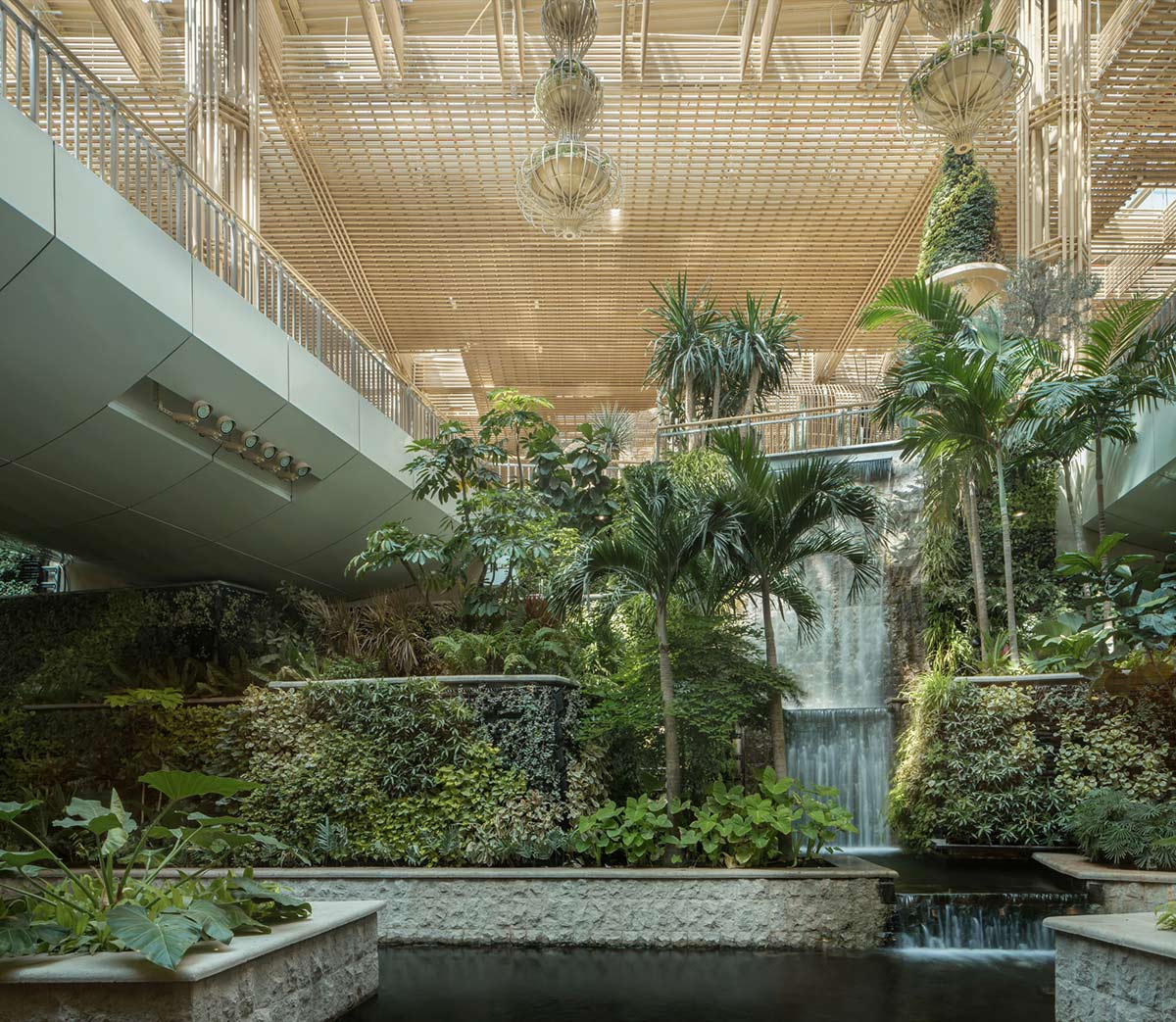
The expansion of Kempegowda International Airport demonstrates that sustainable building and resource-conscious design are possible even at the largest scales. Unsurprisingly, it is the world’s largest terminal building pre-certified with a Platinum LEED rating and the Indian Green Building Council’s top certification.
Text: Gertraud Gerst
Fotos: Hufton + Crow, Ar. Ekansh Goel / Studio Recall





